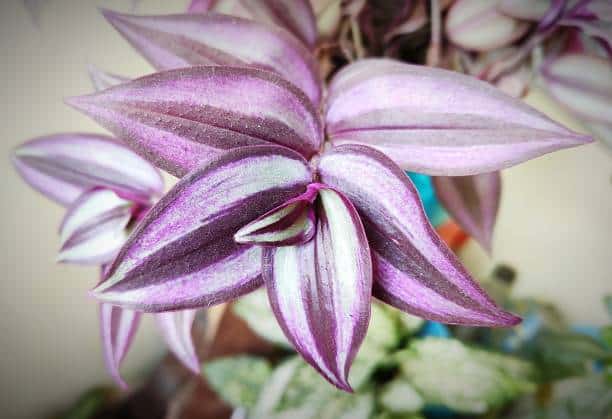Nestled within the tranquil embrace of nature, rock gardens have long been celebrated for their captivating beauty and harmonious blend of rugged terrain and delicate flora.
As a testament to the enduring allure of these natural oases, the art of building a rock garden has evolved into a cherished pursuit for gardening enthusiasts seeking to create a slice of serenity in their own outdoor spaces.
In this guide, we have provided information on how to build a Rock Garden. Carefully read through!
Table of contents
What is a Rock Garden?
A rock garden, also known as a rockery, is a carefully crafted garden that incorporates rocks, stones, and gravel as its primary elements, complemented by a selection of low-growing, drought-tolerant plants that thrive in well-drained soil conditions.
These gardens mimic the natural landscapes of mountainous regions, creating a miniature alpine environment that brings a touch of ruggedness and artistry to outdoor spaces.
Read ALSO: How to Relieve Head Pressure from Coughing – Symptom Alleviation Strategy
How to Make a Rock Garden without Plants
While plants are often an integral part of rock gardens, creating a visually appealing and unique rock garden without plants is certainly possible. Here’s a step-by-step guide on how to make a rock garden without plants:
1. Choose an Appropriate Location:
Select a location that receives ample sunlight and has well-drained soil. Avoid areas prone to waterlogging, as this can lead to instability of the rock arrangement. Consider the overall style of your outdoor space when choosing a location.
2. Prepare the Foundation:
Remove any existing vegetation from the chosen area and dig out the soil to a depth of approximately 6-8 inches. This will create a level base for the rock arrangement.
3. Install a Drainage Layer (Optional):
If the soil in your area is prone to retaining water, consider adding a drainage layer to prevent waterlogging and maintain the stability of the rock arrangement. A layer of gravel or crushed stone can be effective for this purpose.
4. Position the Base Rocks:
Start by placing the largest rocks, serving as anchor points, in the desired arrangement. Ensure they are firmly embedded in the soil to provide a stable foundation.
5. Layer the Rocks:
Continue arranging rocks of varying sizes and textures, creating a natural-looking progression from larger boulders at the base to smaller rocks towards the top. Avoid overcrowding the arrangement, allowing ample space between rocks for visual interest.
6. Add Filling Material:
Fill the spaces between the rocks with gravel, crushed stone, or decorative pebbles. This will add visual texture and help stabilize the rock arrangement.
7. Consider Creative Elements:
Enhance the visual appeal of your rock garden by incorporating decorative elements, such as driftwood, seashells, or unique rocks with interesting textures or patterns.
8. Maintain the Rock Arrangement:
Periodically check the stability of the rock arrangement and adjust any rocks that may have shifted. Remove any debris or weeds that may accumulate.
9. Enjoy Your Creation:
Step back and admire your unique and plant-free rock garden. It will add a touch of rustic charm and natural beauty to your outdoor space.
Choosing the Right Location
The success of a rock garden hinges on selecting an appropriate location that provides the ideal conditions for both the rocks and the plants. Consider the following factors when choosing a site for your rock garden:
- Sunlight: Most alpine plants prefer ample sunlight to thrive, so select a location that receives several hours of direct sunlight daily.
- Drainage: Rock gardens require well-drained soil to prevent waterlogging, which can harm the plants’ roots. Avoid areas that retain water or have poor drainage.
- Slope: A gentle slope can add visual interest and enhance the natural appearance of your rock garden. However, ensure the slope is not too steep to prevent erosion and maintain stability.
- Protection from Wind: Choose a location that is sheltered from strong winds, which can damage delicate alpine plants and dislodge rocks.
Selecting and Arranging Rocks
Rocks play a central role in the aesthetics and structure of a rock garden. Choose rocks of various sizes, shapes, and textures to create a natural and visually appealing arrangement. Consider the following tips when selecting and arranging rocks:
- Variety of Sizes: Use a combination of large, medium, and small rocks to create a sense of depth and scale. Large boulders can serve as anchor points, while smaller rocks add intricate details.
- Natural Shapes: Opt for rocks with irregular, natural shapes rather than perfectly smooth or artificially shaped ones. This adds a touch of authenticity and enhances the natural look of the garden.
- Texture Contrast: Combine rocks with different textures, such as smooth granite, rough sandstone, or porous limestone, to add visual interest and variety.
- Balanced Arrangement: Arrange the rocks in a balanced manner, avoiding a sense of overcrowding or imbalance. Leave enough space between rocks to allow plants to grow freely.
Read Also: How to Cancel SiriusXM – Subscription Discontinuation Strategy
Types of Rock Gardens
Rock gardens, also known as alpine gardens or rockeries, are miniature landscapes that mimic the natural beauty of mountainous regions.
They incorporate rocks, stones, and gravel as their primary elements, complemented by a selection of low-growing, drought-tolerant plants that thrive in well-drained soil conditions.
Rock gardens come in various styles, each with its unique characteristics and appeal. Here are some of the most common types of rock gardens:
Japanese Rock Gardens:
These tranquil gardens emphasize simplicity, harmony, and balance, often incorporating moss, raked gravel, and carefully placed rocks to create a serene and contemplative space.
Zen Rock Gardens
Zen rock gardens, a subset of Japanese rock gardens, embody the principles of Zen Buddhism, focusing on minimalism, spirituality, and mindfulness. They often feature a single, large boulder as the focal point, surrounded by carefully arranged pebbles or sand.
Alpine Rock Gardens:
These gardens mimic the rugged beauty of high-altitude alpine environments, incorporating a variety of rocks, gravel, and low-growing alpine plants that thrive in well-drained, rocky soil.
Waterfall Rock Gardens:
These gardens incorporate a waterfall or cascading water feature, adding a dynamic element to the rock garden’s aesthetic. The sound of flowing water creates a calming and soothing atmosphere.
Woodland Rock Gardens:
These gardens incorporate elements of a woodland setting, featuring a mix of rocks, ferns, mosses, and shade-tolerant plants. They create a natural and lush environment.
Desert Rock Gardens:
These gardens mimic the harsh beauty of desert landscapes, featuring drought-tolerant succulents, cacti, and gravel. They showcase the resilience of plants adapted to arid environments.
Coastal Rock Gardens:
These gardens incorporate elements of a coastal environment, featuring rocks, sand, and plants that thrive in salty air and sandy soil. They bring a touch of seaside charm to outdoor spaces.
Raised Rock Gardens:
These gardens are constructed above ground level in a raised bed, providing better drainage and control over soil conditions. They are ideal for areas with poor drainage or limited space.
Planting and Maintaining Your Rock Garden
Once you have selected and arranged the rocks and chosen the appropriate plants, it’s time to plant and maintain your rock garden:
- Planting: Prepare the planting area by removing any existing vegetation and loosening the soil to a depth of 12-18 inches. Dig holes for each plant, ensuring the depth and width are suitable for the plant’s root ball.
- Watering: Water your rock garden deeply but infrequently, allowing the soil to dry out slightly between waterings. Overwatering can lead to root rot and damage to alpine plants.
- Weeding: Regularly remove weeds to prevent competition for nutrients and sunlight. Hand-pulling or using a hoe is effective for weed control.
- Fertilizing: Apply a light fertilizer specifically designed for alpine plants during the growing season. Avoid overfertilizing, which can harm the plants.
- Winter Care: Protect your rock garden from harsh winter conditions by covering it with a layer of mulch or evergreen boughs. This will help protect the plants from frost and excessive moisture.
Choosing Suitable Plants for Rock Gardens
Choosing suitable plants for rock gardens is crucial for creating a visually appealing and thriving miniature alpine landscape.
When selecting plants, consider factors such as size, flowering periods, low-growing varieties, drought tolerance, and variety of colors and foliage.
Here are some excellent plant choices for rock gardens:
Sedum:
With their diverse range of species, sedums are a staple in rock gardens. These low-growing, succulent plants come in a variety of colors, from vibrant pinks and reds to calming greens and blues.
Their drought tolerance and adaptability to well-drained soil make them ideal for rock garden environments.
Sempervivum:
Also known as hens and chicks, sempervivum plants are known for their rosette-shaped foliage and hardiness.
They thrive in dry conditions and can withstand harsh weather conditions. Their intricate rosettes add texture and visual interest to rock gardens.
Aubrieta:
Aubrieta is a low-growing perennial that produces a delightful carpet of colourful flowers in shades of purple, pink, and white. Their blooms add a burst of vibrant colour to rock gardens during the spring and early summer months.
Alyssum
Alyssum is a versatile groundcover plant that produces a mass of tiny white or yellow flowers. It is a low-maintenance option that adds a soft, delicate touch to rock gardens.
Dianthus
Dianthus, also known as pinks, are flowering perennials that produce fragrant blooms in a variety of colors, including pink, red, white, and purple. They add a touch of elegance and fragrance to rock gardens.
Lewisia
Lewisia, also known as cliffrose, is a low-growing perennial with trailing stems and delicate flowers in shades of yellow, pink, and orange. They add a touch of whimsy and color to rock gardens.
Read ALSO: How to Cook Spiral Ham: Festive Flair in Holiday Cooking
FAQs
To build a rock garden, you will need rocks, soil, plants suitable for rocky terrain, and proper drainage.
Look for rocks that are weather-resistant and vary in size and texture to create visual interest in your rock garden.
Well-draining soil with good fertility is ideal for a rock garden. You can mix sand or gravel into the soil to improve drainage.
Alpine plants, succulents, and drought-tolerant species are well-suited for rock gardens due to their ability to withstand rocky terrain and limited water supply.
Conclusion
Building a rock garden can be a rewarding and enjoyable endeavour for any homeowner or gardening enthusiast. By following the steps outlined in this article, you can create a beautiful and low-maintenance feature that enhances the aesthetic appeal of your outdoor space.
Remember to carefully choose your rocks, plan out the design, and pay attention to proper drainage and soil preparation. With dedication and patience, you can create a stunning rock garden that will bring joy for years to come.





